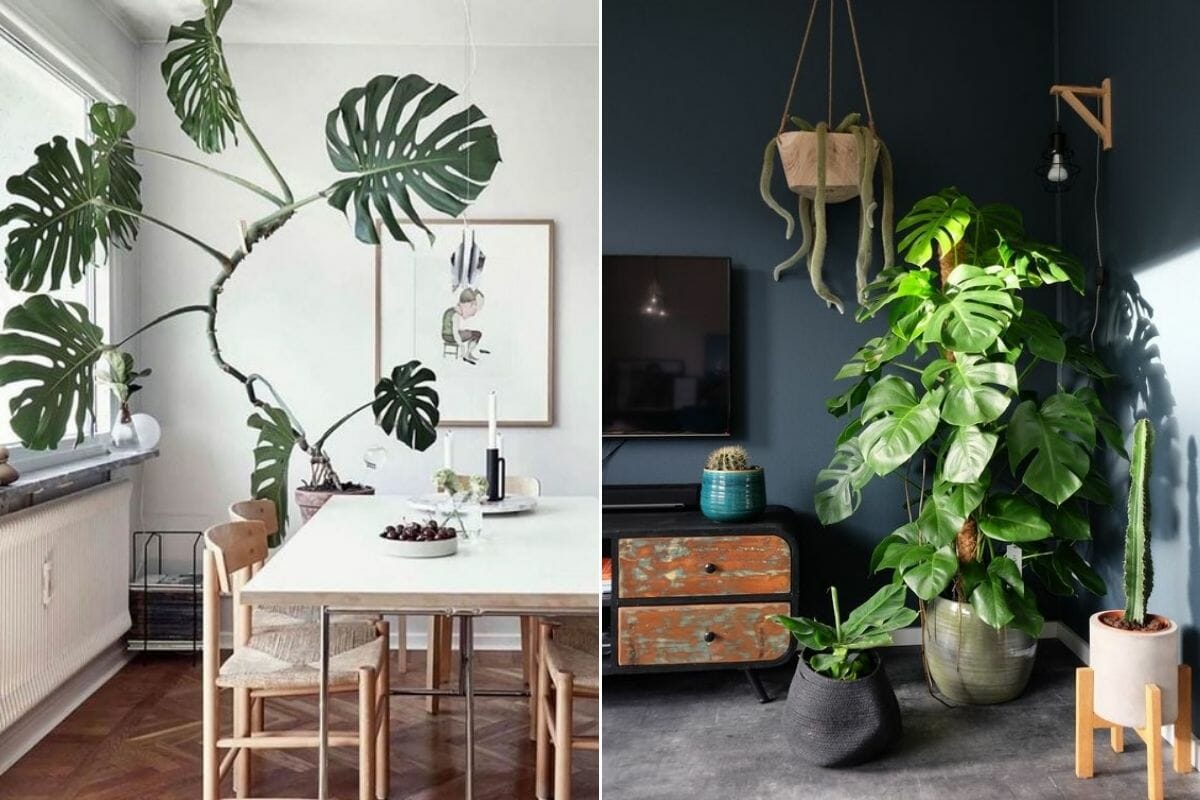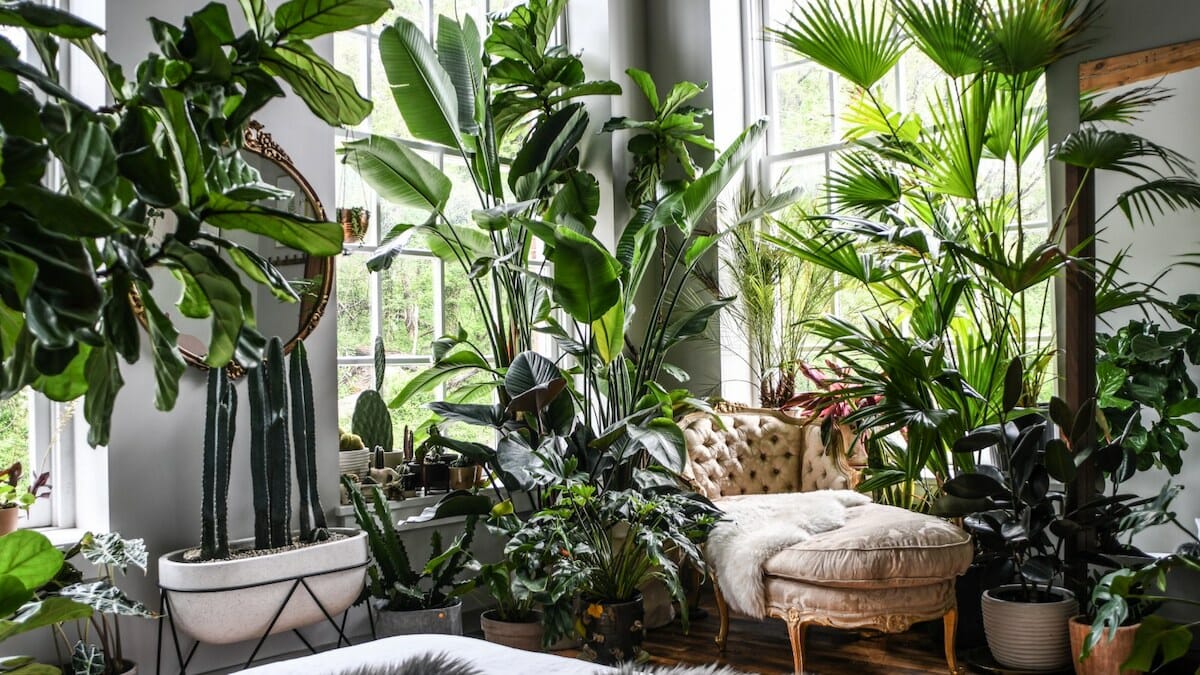Types of Interior Design Plants

The world of interior design plants is as diverse as the natural world itself, offering a wide array of options to complement any style or space. From towering palms to trailing vines, each plant type possesses unique characteristics and benefits, making it ideal for specific design aesthetics and practical considerations.
Adorn your abode with verdant life, for plants breathe vibrancy into any space. Embrace the rustic charm of country decor , where time-worn woods and cozy textiles create a warm and inviting ambiance. Let leafy greens and blooming flowers soften the edges, adding a touch of nature’s tranquility to your country-inspired haven.
When selecting plants for your interior design, consider factors such as foliage, height, and light requirements. Here’s a comprehensive list of popular interior design plants, categorized by these attributes:
Foliage
- Bold and Textured: Plants with large, textured leaves, such as Monstera deliciosa (Swiss cheese plant) or Ficus elastica (rubber plant), add drama and a touch of the tropics to any space.
- Delicate and Airy: Plants with fine, delicate leaves, such as Adiantum capillus-veneris (maidenhair fern) or Asplenium nidus (bird’s nest fern), create a sense of lightness and airiness, adding a touch of elegance to a room.
- Variegated: Plants with leaves that display multiple colors or patterns, such as Calathea orbifolia (prayer plant) or Maranta leuconeura (prayer plant), add visual interest and depth to any design scheme.
Height
- Tall and Majestic: Towering plants, such as Areca catechu (areca palm) or Rhapis excelsa (lady palm), create a dramatic focal point and can add height to a room, making it feel more spacious.
- Medium-Sized: Plants that reach a moderate height, such as Sansevieria trifasciata (snake plant) or Zamioculcas zamiifolia (ZZ plant), are versatile and can be placed on tables, desks, or shelves, adding a touch of greenery without overpowering the space.
- Trailing: Plants that grow long, cascading vines, such as Epipremnum aureum (pothos) or Philodendron scandens (heartleaf philodendron), are ideal for adding a touch of whimsy and greenery to hanging baskets, shelves, or walls.
Light Requirements
- Low Light: Plants that can thrive in low-light conditions, such as Aspidistra elatior (cast iron plant) or Dracaena fragrans (corn plant), are ideal for spaces with limited natural light, such as hallways or bathrooms.
- Medium Light: Plants that prefer moderate light levels, such as Philodendron erubescens (pink princess philodendron) or Calathea ornata (pinstripe calathea), are suitable for rooms with windows that receive indirect sunlight.
- Bright Light: Plants that require bright, indirect light, such as Ficus lyrata (fiddle-leaf fig) or Monstera adansonii (swiss cheese vine), are best placed near windows that receive ample natural light.
Plant Placement and Arrangement: Interior Design Plants

Incorporating plants into interior design can enhance the aesthetics and create a sense of tranquility. Strategic placement and arrangement of plants are essential to maximize their impact and create a harmonious space.
To achieve effective plant placement, consider the following principles and methods:
Principles of Plant Placement
- Size and Shape: Select plants that are proportionate to the size of the room and the space available.
- Light Requirements: Consider the light conditions in the room and choose plants that thrive in those conditions.
- Focal Points: Use larger plants or plants with striking foliage as focal points to draw attention to specific areas.
- Grouping and Layering: Group plants together to create visual interest and depth. Layer plants at different heights to add dimension.
- Negative Space: Leave some areas of the room plant-free to create a sense of balance and prevent overcrowding.
Plant Placement Table
| Plant Size | Shape | Light Requirements | Suggested Room Locations |
|---|---|---|---|
| Small (under 12 inches) | Compact, upright | Bright indirect light | Desktops, shelves, windowsills |
| Medium (12-24 inches) | Bushy, spreading | Moderate indirect light | End tables, coffee tables, sideboards |
| Large (over 24 inches) | Tree-like, sprawling | Bright indirect or direct light | Corners, large windows, foyers |
Examples of Plant Arrangements
- Grouping: Arrange a group of plants with varying heights and textures to create a lush and visually appealing display.
- Layering: Place taller plants in the back, followed by medium-sized plants, and then smaller plants in the front to create a layered effect.
- Focal Points: Use a large plant with striking foliage as a focal point in the corner of a room or next to a fireplace.
3. Plant Care and Maintenance

Maintaining the vitality and aesthetic appeal of interior design plants requires diligent care and attention. This comprehensive guide provides practical solutions and expert advice to ensure your plants thrive indoors.
Watering, Interior design plants
Proper watering is crucial for plant health. Overwatering can lead to root rot, while underwatering can cause wilting and stunted growth. Determine the appropriate watering frequency based on the plant species, soil type, and environmental conditions.
- Check the soil moisture by inserting your finger 2-3 inches deep. Water only when the soil feels dry to the touch.
- Water thoroughly, allowing the water to penetrate the entire root system. Avoid shallow watering, as it only moistens the top layer of soil.
- Use lukewarm water, as cold water can shock the plant.
- Avoid overwatering, especially during the winter months when plants are dormant.
Fertilizing
Fertilizing provides essential nutrients for plant growth and vitality. Choose a balanced fertilizer specifically formulated for indoor plants.
- Fertilize regularly during the growing season (spring and summer) according to the manufacturer’s instructions.
- Avoid over-fertilizing, as it can burn the plant roots.
- Use a liquid fertilizer diluted with water for easier absorption.
- Flush the soil occasionally with water to prevent salt buildup.
Lighting
Light is essential for photosynthesis and overall plant health. Determine the light requirements of each plant species and provide adequate lighting.
- Place plants near windows or use artificial grow lights to supplement natural light.
- Rotate plants regularly to ensure even light distribution.
- Avoid placing plants in direct sunlight, as it can scorch the leaves.
- Consider using sheer curtains or blinds to filter harsh sunlight.
Pest Control
Pests can damage plants and affect their health. Regular inspection and prompt treatment are essential for pest control.
- Inspect plants regularly for signs of pests, such as aphids, mealybugs, or spider mites.
- Use insecticidal soap or neem oil to treat infestations.
- Keep plants clean and free of debris to prevent pest buildup.
- Isolate infected plants to prevent the spread of pests.
In the symphony of interior design, plants play the role of harmonious melodies, adding life and vitality to any space. Their verdant hues and intricate forms create a captivating visual experience. To elevate this symphony, consider incorporating a tall vase into your décor.
Its graceful silhouette will draw the eye upward, creating an illusion of height and grandeur. The vase’s sleek lines and ample space provide the perfect canvas for showcasing tall, lush plants, further enhancing the aesthetic appeal and purifying the air.